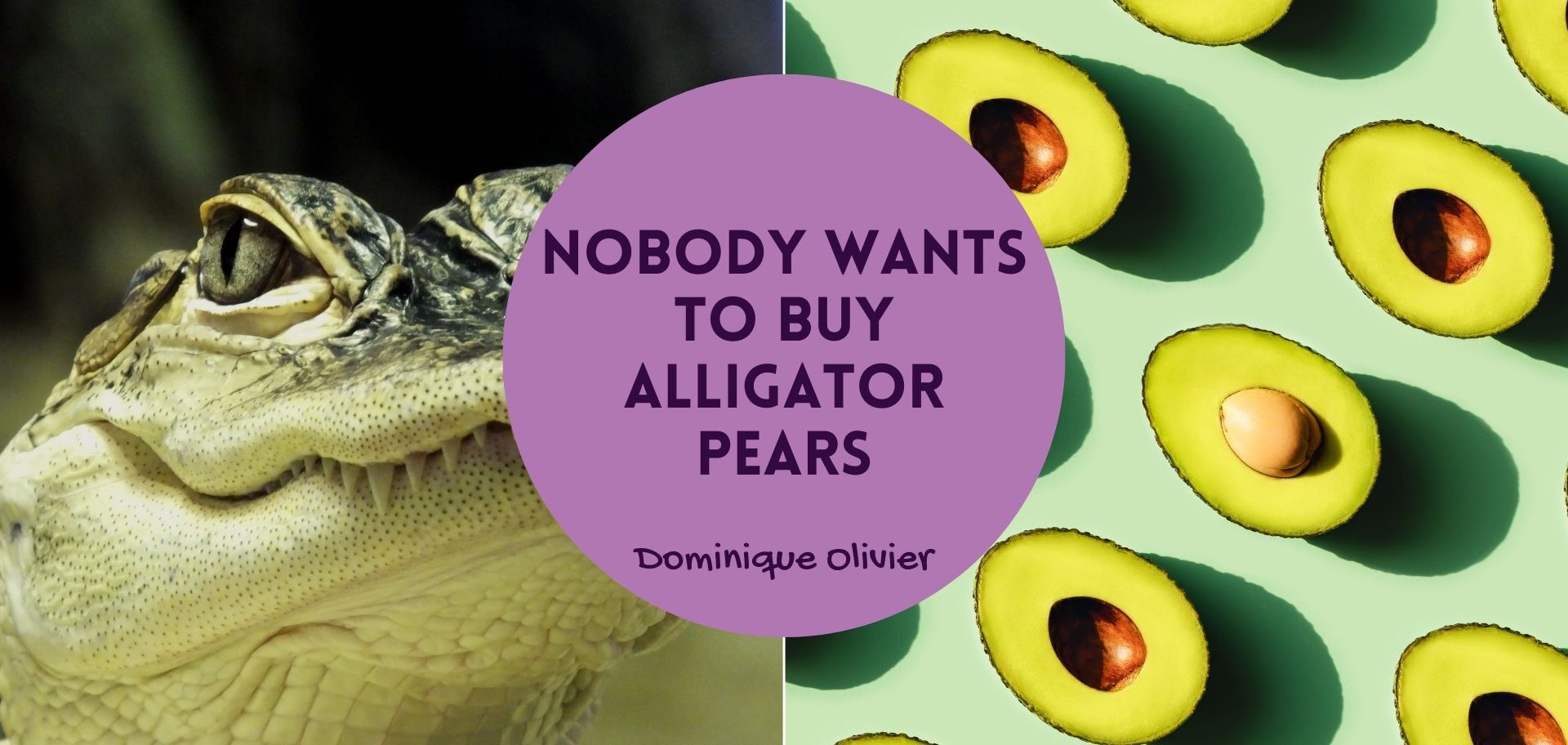It’s not every day that a supersized annual sporting event transforms an obscure exotic fruit into a $341.9 million industry. This is the unlikely story of the avocado, the Super Bowl and the rebrand of the century.
Before we go any further: yes, avocados are technically fruits (if you want to get even more technical about it, they are members of the berry family). And while they seem to be ubiquitous these days, topping everything from toast and pizza to poke bowls, there was a time not too long ago when these pear-shaped, leather-skinned delicacies were considered quite rare in the United States. So how did the humble avocado graduate from grocery-store reject to Super Bowl Sunday star ingredient?
Let’s start at the beginning.
What’s in a name?
The avos we know (and love) today weren’t always known by their snappy name. From their early start in Central and South America around 500 BC, they were known to Spanish speakers as the aguacate fruit. This proved challenging to pronounce in the West, particularly in North America. Their original aztec name, āhuacatl, was even more of a problem, especially since it translates directly to “testicle” (an ode to both the shape of the fruit and its use as an aphrodisiac).
Inspired by the outline of the fruit and its tough, bumpy skin, farmers in the United States dubbed it the alligator pear. While this was much easier to pronounce, the visual of a swamp-dwelling, man-eating reptile did little to move avocados off the shelves. The fact that they really had nothing in common with pears beyond their shape also didn’t help matters.
Farmers had a marketing problem on their hands. They knew that the fruit had potential, but they couldn’t convince people to try it. After much to and fro, a group of growers came together in 1915 to solve the problem for good. They decided to rename the fruit as the avocado – a nod to its language of origin with an upmarket, exotic spin. This, they reckoned, was a product that could be sold to the dinner party crowd, the perfect appetiser to accompany prawn toasts and shrimp cocktails.
By the 1920s, the collective of avocado growers had also renamed themselves the California Avocado Association, and they were well on their way to positioning avocados as the luxury food of the decade. One print ad from that era showed a beautifully sliced avocado, fanned out on an expensive piece of china, under the headline: “The aristocrat of salad fruit.”
Avocados were finding their market, but it was a niche one that saw little sales. For things to really improve, bolder steps needed to be taken.
A bumpy route to market
Avocados are curious things, and that curiosity makes them a hard sell. Think about it: they are found in the fruit aisle of the grocery store, but they aren’t sweet. They have a tough, inedible skin and a hard pit that is difficult to remove. They ripen slowly but go off very quickly. They don’t cook well and start browning practically as soon as they have exposure to air.
For starters, consumers in the US had to be educated on what avocados were. Americans simply didn’t know how to choose or eat the fruit – they weren’t waiting for them to ripen, and were then disgusted by the taste and texture. The growers went to great lengths to educate supermarket owners on the difference between a ripe and unripe avocado, so that they in turn could help their customers.
Various avocado marketing campaigns saw moderate sales in the produce aisles between the ’50s and ’70s. That was all well and good until nutrition experts began to promote a low-fat diet. The public couldn’t differentiate between saturated fats, which were the target of this movement, and monounsaturated fats, which are “good” fats.
Naturally, fatty avocados came under fire. Again, the avocado growers thought smartly. By funding research into monounsaturated fats and the benefits of the Mediterranean diet in particular, they made a strong case for avocados as a health food, thereby unlocking a new consumer demographic. Avocados entered the nineties with a healthy edge, but sales still lagged.
Holy guacamole
Since the start, the avocado problem has been a marketing problem – and there’s only one way to solve one of those. Eventually, a PR firm was hired to transform avocados from a luxury item into an everyday item for shoppers. That’s when the guacamole Super Bowl ritual was born.
In the ’90s, the nature of Super Bowl Sunday changed. The event became less about watching the game and more about having a reason to get together for a party – and having a party meant consuming beer and snacks. And what better snack to accompany all those chips than guacamole? Naturally, avocado growers wanted in on the Super Bowl frenzy, but there was one major problem. The Super Bowl takes place right in the middle of the growing season for avocados in the US, when ripe fruits are unavailable.
This may have been a problem for US growers, but south of the border, Mexican farmers got a whiff of potential. Avocado imports from Mexico were banned until 1997 due the alleged risk of parasites from tropical climates, but restrictions were loosening up. Seizing the opportunity to colonise the Super Bowl, more and more Michoacán producers managed to pass the sanitary tests necessary to gain access to the US market. By the time the Mexican avocado imports were completely liberalised in 2007, Michoacán had become an unbeatable competitor for Californian avocado growers.
In 2021, 132.3 tons of avocados were consumed on Super Bowl Sunday. About 75% of those Super Bowl avocados were imported from Mexico, which has been the largest supplier of avocados to the US since 2008.
Banned less than three decades ago, avocados from Mexico have become so normalised in the US that one brand has even adopted the phrase as their name. And their Super Bowl ads are… shall we say, memorable.
The dark side of the guacamole
Of course, where there is massive demand, there is usually also massive opportunity for crime.
It probably comes as no surprise to anyone that Mexico now has numerous avocado cartels. The same avocado farmers in Michoacán who seized the opportunity to be a part of the Super Bowl are increasingly becoming victims of blackmail and kidnapping, forced to sell their orchards to gangsters at bargain prices. And that’s the good outcome. The less good outcome ends with a bullet hole at the nape of the neck.
Meanwhile, large importers and avocado brokers are making a different kind of killing. By purchasing their avocados from dodgy producers at dirt-cheap prices, they are able to effectively pay a dollar per kilo for the same avocados that later sell for eight dollars in US supermarkets.
Capitalism, hey? Not even avocados are spared.
About the author:

Dominique Olivier is a fine arts graduate who recently learnt what HEPS means. Although she’s really enjoying learning about the markets, she still doesn’t regret studying art instead.
She brings her love of storytelling and trivia to Ghost Mail, with The Finance Ghost adding a sprinkling of investment knowledge to her work.
Dominique is a freelance writer at Wordy Girl Writes and can be reached on LinkedIn here.





Thanks, I enjoyed that!
Some fruit need more spin than others. Calling the avo the “aristocrat of salad fruit” seemed to have helped its cause, but somehow I don’t think calling the durian the “king of fruit” will do the same wonders.
There is also the interesting phenomenon of luxury fruit, like the Japanese square watermelon that costs thousands of rands.
Always nice to encounter you in the comment section, Ludwig!
I think what really helped the avocado was a) the health food spin and b) the genius connection with the Super Bowl. They’ve really become synonymous with this sporting event in a way that I don’t think many other foods could. It’s a marketing masterclass.
I also found it amusing to consider the whole narrative about Millennials being told that they need to stop buying avocado toast in order to be able to afford houses. The aristocrat of salad fruits indeed.
We do have Avos in South Africa. Locally produced for SA consumption. History of avos was never understood. Thanks for an awesome article. Much appreciated.
D D BHIKHA
DURBAN, SOUTH AFRICA
Thanks so much Dhirajlal! I wish the history of avocados in South Africa was as interesting as this story, which took place in the US. One interesting thing that I can tell you that is relevant to South Africa is that SA and Australia are the only countries in the world that call them by the shortened name, avos. Everywhere else they are only known as avocados!
Thank you for the excellent article, Dominique.! I am always interested in the history of something and this was very interesting to read.
You’re welcome Jan – I’m so happy that you found this interesting. I hope you watched and enjoyed the videos as well!